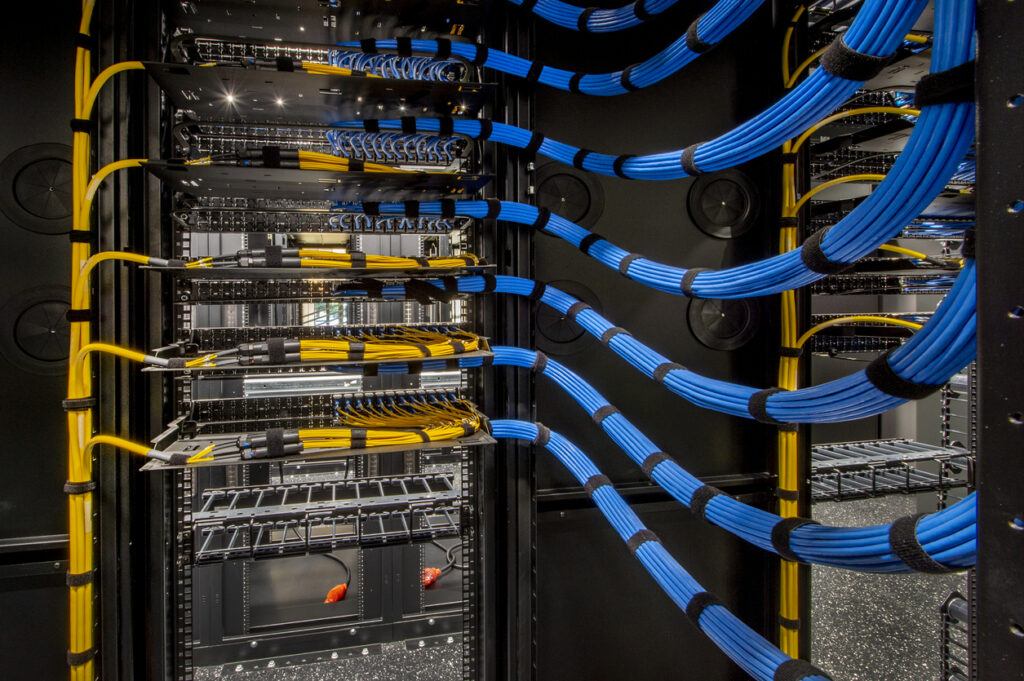Structured Cabling

Structured cabling refers to the process of designing and installing a comprehensive cabling system that can accommodate a range of hardware needs both in the present and the future.
By implementing a properly installed system, businesses can effectively fulfill their existing requirements and remain well-prepared to meet the evolving demands of their industry.
This also ensures that any future hardware additions are compatible with the existing infrastructure, preventing any potential disruptions or downtime. By investing in a well-designed structured cabling system, businesses can ensure a reliable and sustainable IT infrastructure that can support their continued growth and success.
Structured cabling design and installation follow a set of standards that outline the wiring requirements for data centers, offices, and apartment buildings to enable voice or data communication via various types of cabling, including category 5e (Cat 5e), category 6 (Cat 6), and fiber optic cabling with modular connectors. These standards prescribe the proper method of laying out cabling in various topologies to meet the specific needs of the customer, usually incorporating a central patch panel that is typically rack-mounted in a 19-inch configuration. This patch panel facilitates modular connections that can be utilized as needed. Each outlet is then connected to a network switch or an IP/PBX (Private Branch Exchange) telephone system patch panel, which is also typically rack-mounted, to complete the network connectivity.
When patching lines as data ports into a network switch, simple straight-through patch cables are required at both ends to facilitate connection to a computer. Conversely, voice patches to PBXs in most countries necessitate an adapter at the remote end to translate the configuration on 8P8C modular connectors into the local standard telephone wall socket. However, in North America, no adapter is needed as the 6P2C and 6P4C plugs, commonly utilized with RJ11 and RJ14 telephone connections, are physically and electrically compatible with the larger 8P8C socket. It is important to note that RJ25 and RJ61 connections are physically but not electrically compatible, and therefore, cannot be utilized. In the United Kingdom, an adapter must be present at the remote end as the 6-pin BT socket is physically incompatible with the 8P8C connector.
In the context of structured cabling, it is not uncommon to utilize color-coded patch panel cables to distinguish the type of connection, although such a practice is not required by cabling standards, except in the demarcation wall field.
According to established cabling standards, all eight conductors in Cat 5e/6/6A cable must be connected.
The implementation of an IP phone system enables both telephone and computer functions to operate on the same wiring, thereby eliminating the need for separate phone wiring.
The maximum distance for permanent link installation, which includes all copper cable types (Cat 5e/6/6A), is 90 meters, with an allowance of up to 10 meters of patch cords at either end.
Both Cat 5e and Cat 6 cabling are capable of supporting power over Ethernet (PoE) applications up to 90 meters. However, Cat 6A cabling is recommended for powering and connecting PoE devices due to its higher performance and power efficiency as compared to Cat 5e cable, which dissipates more power.
Contact us today to learn more about how we can help your business stay connected, secure, and ready for the future.
